New Year's Message
January 1, 2014

Dear Friends:
Happy New Year! I wish you and yours a wonderful and interesting 2014 – interesting in a good way, of course!
How was your 2013? Good I hope – although many people, I know, were challenged this past year. Gambatte!
My 2013 was a bit different from past years. A year for introspection, perhaps. In 2012 I traveled quite a bit, perhaps it was my mid-life musha shugyo. I looked back over my theme of 2013 and was flabbergasted by the many things I did and places I visited.
Of course, I did do some traveling in 2013, but not as much as the last few years. I really needed to stay at home more and train on my own. As a musician, I know for every hour I perform on stage, I must put in many, many more hours of practice at home, "woodshedding" by myself. I think it is the same with martial arts. I am flattered to be asked many places to teach, but how can I continue to do that if I don't keep improving myself? How can I teach something if I can't do it?
When I was much younger I spent a lot of time hanging around Hatsumi Sensei. I saw him in the dojo, of course, but after everyone went home, I would go back to his house to "help" him with this or that. Invariably he would grab his three dogs (and me) and head out for long walks. Sometimes it would be bitterly cold, so we would wrap our faces and put on warm clothes. Once Sensei was hit by a car; from then on he would wear a flashlight on his head that looked like something a coal miner would wear. But regardless, hot or cold, rain or shine, he would walk. And train. He would practice ninja walking, perform shuto against trees and lampposts, judo throw the dogs, blend in with the shadows, search the trees for places "enemies" might hide. Many things that you would never see in a dojo. Hmmm, I remember those days very well...

Anyway, as I said, I did do a bit of traveling in 2013.
Our group enjoyed the Buyū Camp West in San Francisco under the Golden Gate Bridge on the Pacific Ocean. As has become custom, the event was in honor of Mark Hodel.
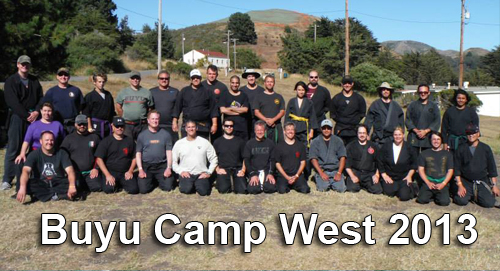
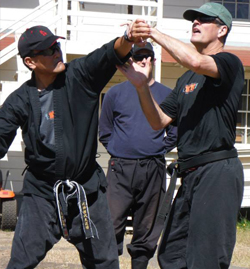 |
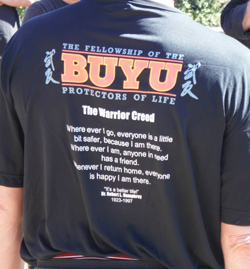 |
| Miki and Jack "doing the dance" | Always... |
We enjoyed another Buyū Camp East in New Jersey.
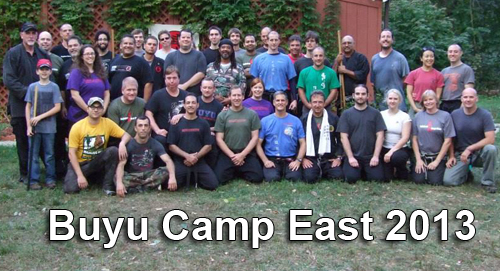
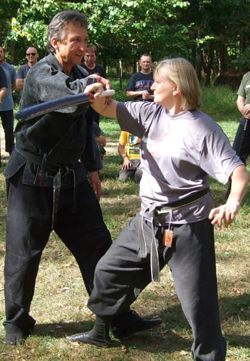 |
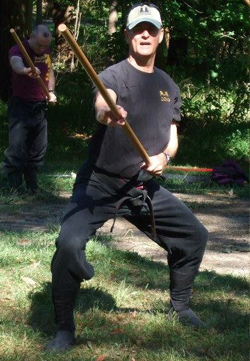 |
| Steffen & Michaela BYCE 2013 | A little bojutsu, of course! |
We had training seminars in NJ and California. I visited Paul Fisher, Ed Figueroa and the guys and gals in Florida twice.
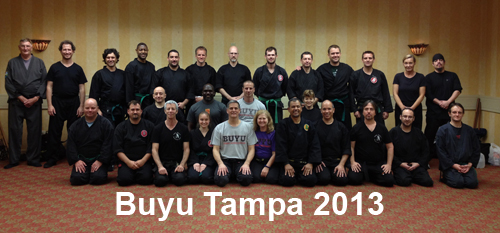
 Post West Palm Beach Training libation in November with Ed, Claudia, Gary and Ken.
Post West Palm Beach Training libation in November with Ed, Claudia, Gary and Ken.Second from left is Carson Cox, one of the original 1980 San Diego training guys!
